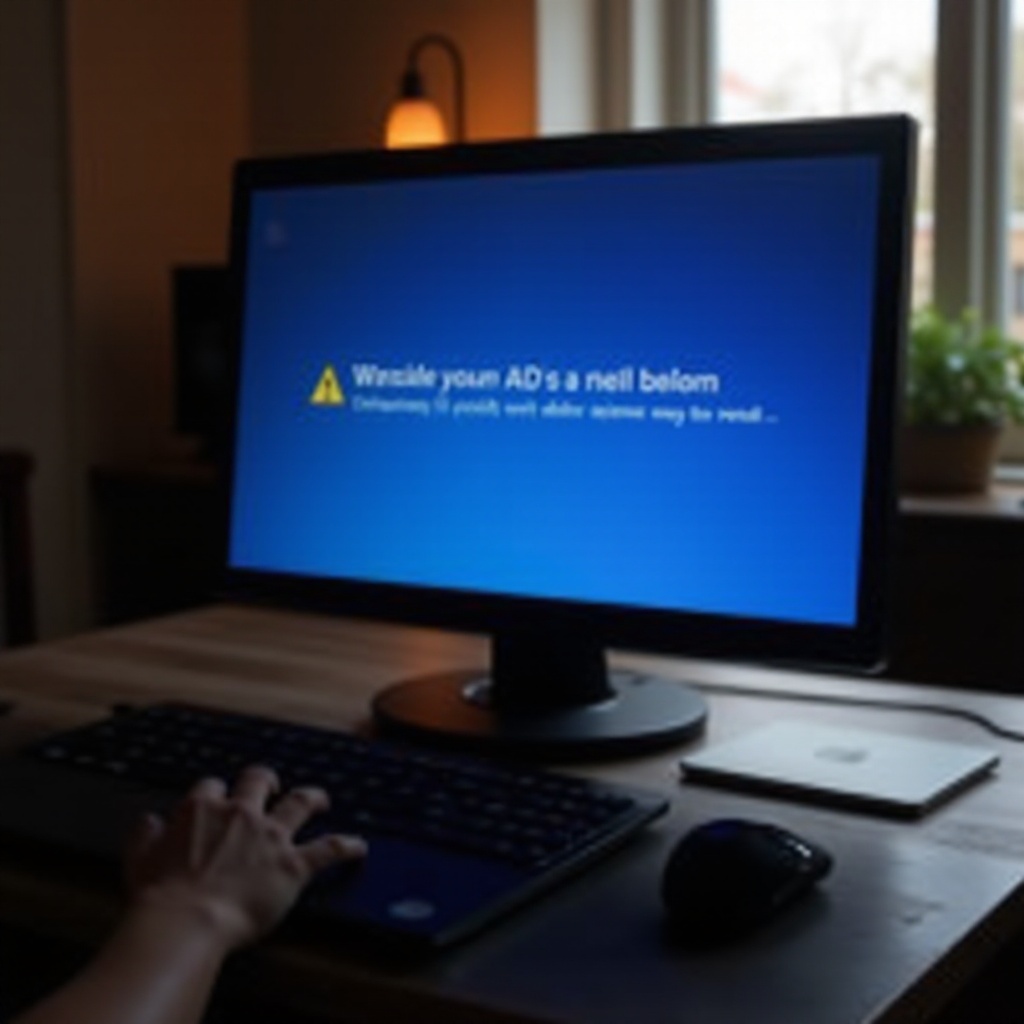Introduction
Imagine you’re in the middle of an important task and suddenly, your screen turns blue with the message ‘Your PC ran into a problem and needs to restart.’ This isn’t merely a frustration but a disruption that can lead to data loss and potential workflow breakdowns. Understanding how to address this issue is crucial in preventing repeated interruptions and preserving your work’s integrity. This guide will demystify the reasons for this error, and equip you with both fundamental and advanced troubleshooting techniques. Whether you are a beginner or a tech enthusiast, you’ll find the resources necessary to restore your PC’s functionality and shield it from unexpected breakdowns.

Understanding the Error Message
The infamous ‘Blue Screen of Death’ (BSOD) is heralded by the error message ‘Your PC ran into a problem and needs to restart.’ This message signifies critical system errors that necessitate an automatic reboot by Windows to prevent damage. Causes range from hardware issues and software conflicts to memory malfunctions and corrupted system files. Although it appears intimidating, understanding this message can guide you to appropriate resolutions. Typically, the blue screen displays a stop code that hints at the underlying issue, helping you narrow down solutions. Let’s explore what generally leads to this error and relate it to effective strategies for fixing it.
Common Causes of the Error
Identifying potential causes sets the stage for finding correct solutions. Here are some of the usual offenders behind the BSOD:
-
Hardware Failures: Faulty RAM, hard drives, or peripherals often result in crashes.
-
Software Conflicts: Incompatible programs, especially those integral to system operations, can trigger the error.
-
Driver Issues: Incorrect or outdated drivers may cause miscommunication between the system and hardware.
-
Overheating: Lack of adequate cooling can overheat components, prompting a protective shutdown.
-
Corrupted System Files: Sudden power losses or malware can compromise essential system files.
Appreciating these causes guides you to targeted, effective solutions, whether they’re as simple as restarts or as involved as component replacements. Let’s now transition into initial troubleshooting tactics for this error.

Initial Troubleshooting Steps
Often, simpler measures can resolve tricky problems with only minimal effort:
-
Restart Your Computer: A basic reboot might clear out minor glitches causing the error.
-
Check for Software Updates: Ensure your operating system and applications are current to patch known issues.
-
Scan for Malware: Conduct a comprehensive antivirus scan to eliminate issues due to malicious software.
-
Uninstall Recent Changes: If the problem started after new installations, revert those changes to see if stability is restored.
-
Check Hardware Connections: Confirm all hardware is properly connected. Even slight disconnections can mimic severe failures.
Persisting issues despite these efforts signal the need for more in-depth troubleshooting. Now, let’s escalate to advanced techniques for resolution.
Advanced Troubleshooting Methods
Should basic tactics prove insufficient, adopt these more technical solutions:
Using Windows Startup Repair
Windows can fix many startup issues autonomously:
- Restart your system, pressing F8 as it boots.
- Select ‘Repair Your Computer’ in the boot menu.
- Opt for ‘Startup Repair’ and adhere to the given directions.
Running System File Checker (SFC)
This tool can detect and fix corrupted system files:
- Access Command Prompt with admin rights.
- Enter
sfc /scannowand hit Enter. - Await completion and follow any subsequent instructions.
Performing a Clean Boot
A clean boot can uncover issues caused by third-party applications:
- Launch ‘System Configuration’ from the start menu.
- On the ‘Services’ tab, hide all Microsoft services and disable the rest.
- Head to the ‘Startup’ tab, disable startup items, then restart your PC.
If these steps solve the error, a non-essential service was likely responsible. Methodically re-enable services to isolate the problematic component.
Preventative Measures to Avoid Future Crashes
Preventive actions can significantly diminish BSOD instances. Here’s how:
Regular System Maintenance
Engage in regular system evaluations, including disk cleanups and defragmentation, ensuring smooth performance.
Keeping Drivers and Software Updated
Always update drivers and software. Manufacturers release updates fixing bugs that might cause system crashes.
These measures create a stable computing environment, reducing BSOD incidence. However, recognize when advanced issues require professional intervention.

When to Seek Professional Help
Persistent errors despite following troubleshooting guidelines warrant specialist involvement. Tech experts can run exhaustive hardware diagnostics and intricate software evaluations that might elude general users. Their skills can unearth intricate malfunctions that may not be immediately obvious.
Conclusion
Facing the ‘Your PC ran into a problem and needs to restart’ message can be intimidating, yet it is a soluble challenge with systematic troubleshooting. Begin with simple checks and, if necessary, shift to advanced techniques. Proactive maintenance and updating considerably reduce the risk of future encounters with this error, keeping your system stable and data secure.
Frequently Asked Questions
What should I do if the error persists after trying all troubleshooting steps?
If available solutions fail, professional help is advisable. Technicians have tools to diagnose and resolve deep-seated problems.
How can I retrieve my unsaved data after a system crash?
Use data recovery software or Windows built-in recovery tools. Backup regularly to minimize data loss risks.
Are there any specific tools recommended for diagnosing this problem?
Tools like BlueScreenView or WhoCrashed can offer insights into BSOD causes by analyzing crash dump files, aiding your troubleshooting process.